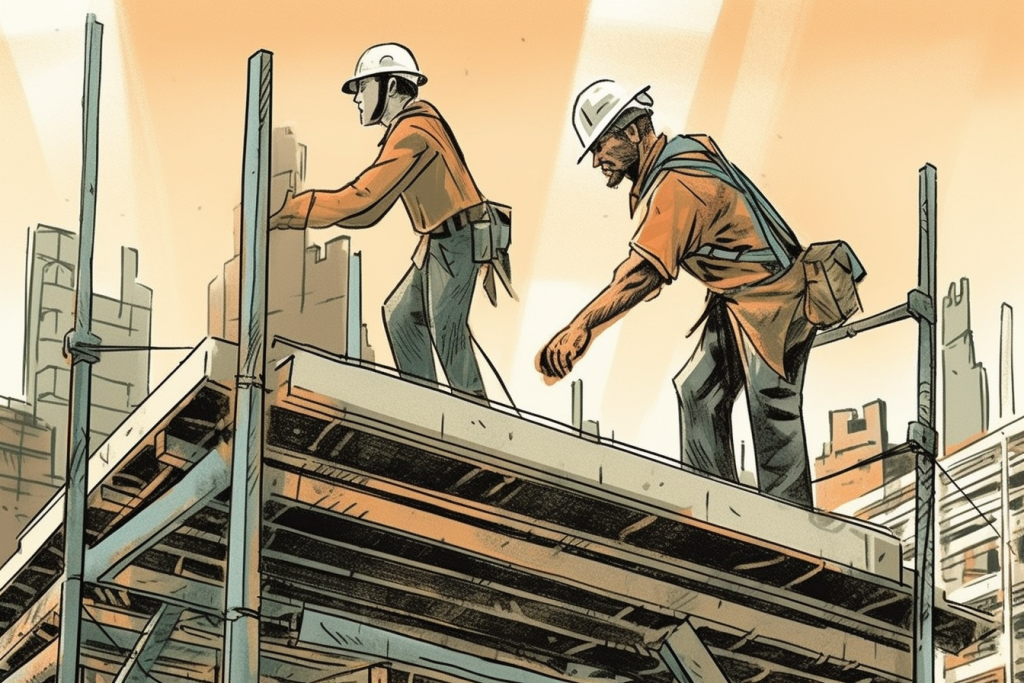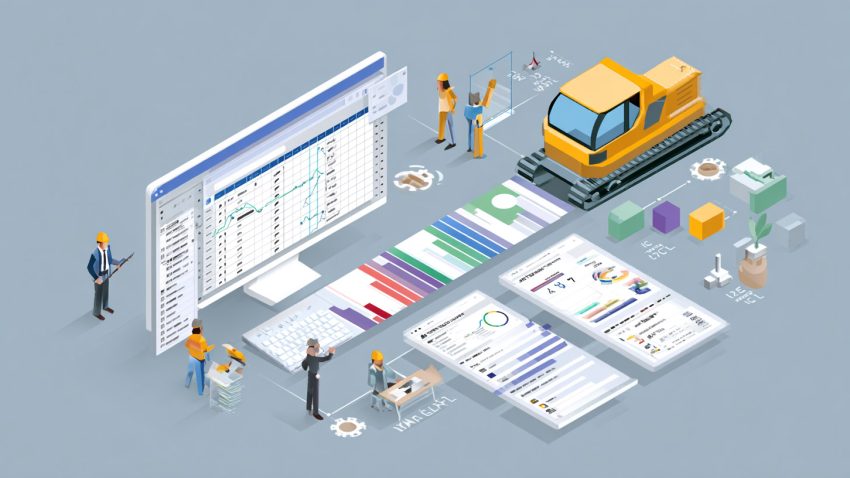Construction Safety Management Workflows are a Leading Source of Inefficiency – Here’s How to Fix It with StruxHub Permit
The construction industry, with its numerous risks and potential hazards, necessitates a strong focus on safety management. However, traditional safety management workflows often suffer from inefficiencies that can hinder project progress, increase costs, and negatively impact overall safety. In this article, we will explore the common sources of inefficiency in construction safety management workflows and provide practical solutions to streamline these processes, ultimately improving safety and productivity on your jobsite.

Inadequate Safety Planning and Documentation
A lack of proper planning and documentation is a significant source of inefficiency in construction safety management workflows. To address this issue:
Develop a comprehensive safety plan that outlines potential hazards, safety protocols, and procedures to be followed on the jobsite. This plan should be regularly updated and communicated to all workers, including subcontractors.
Use standardized templates for safety documentation, such as risk assessments, method statements, and incident reports, ensuring consistency and ease of information retrieval.
Implement a centralized document management system to store and organize safety documentation, allowing for easy access and collaboration among team members.
Inefficient Communication and Collaboration
Poor communication and collaboration among team members can lead to misunderstandings, duplicated efforts, and a lack of accountability. To improve communication and collaboration:
Establish clear lines of communication and designate points of contact for safety-related matters, ensuring that concerns are addressed promptly and effectively. Hold regular safety meetings to discuss safety performance, address concerns, and share best practices among team members.
Utilize digital collaboration tools, such as instant messaging apps and project management software, to facilitate real-time communication and collaboration among team members.
Insufficient Training and Competency Assessment
Inadequate training and competency assessment of workers can result in unsafe work practices and a higher risk of accidents. To enhance training and competency assessment:
- Provide regular safety training for all workers, including subcontractors, ensuring that they are familiar with company safety policies, procedures, and relevant regulations.
- Implement a system for assessing and tracking worker competency, such as regular performance evaluations and skills assessments. This can help identify skill gaps and areas for improvement.
- Foster a culture of continuous learning and professional development, encouraging workers to seek additional training and certifications to enhance their safety knowledge and skills.
Manual and Paper-Based Processes
Reliance on manual and paper-based processes can lead to inefficiencies, data loss, and increased administrative workloads. To modernize safety management workflows:
Embrace digital solutions, such as safety management software and mobile apps, to automate and streamline safety-related tasks.
Implement electronic forms and checklists for safety inspections, incident reporting, and other safety-related activities, reducing paperwork and data entry errors.
Leverage data analytics and reporting tools to gain insights into safety performance and identify areas for improvement.
Reactive Rather Than Proactive Safety Management
A reactive approach to safety management, where issues are addressed only after they arise, can result in increased accident rates and poor safety performance. To adopt a proactive approach to safety management:
Implement a hazard identification and risk assessment process to identify potential hazards and implement appropriate control measures before work begins.
Encourage workers to report near misses and hazards, providing a platform for anonymous reporting if necessary.
Regularly review and analyze safety data, such as incident reports and inspection findings, to identify trends and areas for improvement. Use this information to develop targeted safety initiatives and interventions.
Inadequate Accountability and Enforcement
A lack of accountability and enforcement can lead to non-compliance with safety protocols and an increased risk of accidents. To improve accountability and enforcement:
Clearly communicate safety expectations to all workers, emphasizing the importance of individual responsibility for safety.
Monitor compliance with safety protocols through regular jobsite inspections and audits. Address non-compliance issues promptly, providing additional training or disciplinary action as needed.
Implement a system for tracking and documenting safety compliance, such as a safety management software, to maintain visibility of individual and team performance.
Establish consequences for non-compliance with safety protocols, such as progressive disciplinary actions or penalties. Communicate these consequences to all workers to reinforce the importance of adhering to safety guidelines.
Ineffective Incident Investigation and Root Cause Analysis
Inefficient incident investigation and root cause analysis processes can lead to recurring safety issues and accidents. To improve incident investigation and root cause analysis:
Develop a standardized procedure for incident investigation, outlining the steps to be taken, roles and responsibilities, and timelines for completing the investigation.
Train designated personnel in incident investigation and root cause analysis techniques, ensuring that they are equipped with the necessary skills to effectively identify underlying causes of accidents and develop appropriate corrective actions.
Review and analyze incident data to identify trends and recurring issues, using this information to develop targeted safety interventions and preventive measures.
Poorly Managed Safety Incentive Programs
Ineffective safety incentive programs can lead to a lack of motivation among workers to prioritize safety and comply with safety protocols. To improve safety incentive programs:
Develop a balanced safety incentive program that rewards both individual and team safety performance, emphasizing the importance of collaboration and shared responsibility for safety.
Regularly review and update safety incentives to maintain their relevance and effectiveness, ensuring that they align with current safety goals and objectives.
Communicate the details of the safety incentive program to all workers, ensuring that they understand how their actions contribute to safety performance and the rewards they can earn.
Inadequate Jobsite Inspections
Infrequent or poorly conducted jobsite inspections can result in unidentified hazards and increased accident risks. To enhance jobsite inspections:
Develop a regular schedule for jobsite inspections, ensuring that all areas of the jobsite are inspected frequently and thoroughly.
Train designated personnel in effective inspection techniques, equipping them with the necessary skills to identify hazards and assess compliance with safety protocols.
Use digital tools, such as mobile apps or inspection software, to streamline the inspection process, automate data collection, and generate actionable insights.
Limited Use of Technology for Safety Management
A failure to leverage available technology for safety management can hinder efficiency and effectiveness. To better utilize technology for safety management:
Evaluate the current technology landscape, identifying tools and solutions that can help streamline and enhance safety management workflows.
Implement technology solutions incrementally, starting with high-impact areas, such as incident reporting, inspections, or training management.
Regularly review and assess the effectiveness of technology solutions, making adjustments as needed to ensure they continue to meet safety management needs.
By addressing these common sources of inefficiency in construction safety management workflows, you can significantly improve the safety and productivity of your jobsite. Embracing technology, fostering a culture of safety, and implementing robust safety management processes will not only protect your workers but also contribute to the overall success of your construction projects.
To learn more about how StruxHub can streamline your construction management processes, request a demo today. By completing our form, you’ll hear from our team soon to discuss how we can help you:
Schedule material deliveries with your trades
Coordinate site resources and on-site logistics
Digitize work permits and inspection forms
Communicate and track P6 and Excel schedules
Broadcast announcements to all workers
Don’t miss out on the opportunity to optimize your construction management processes with StruxHub. Contact us today to schedule a demo.


